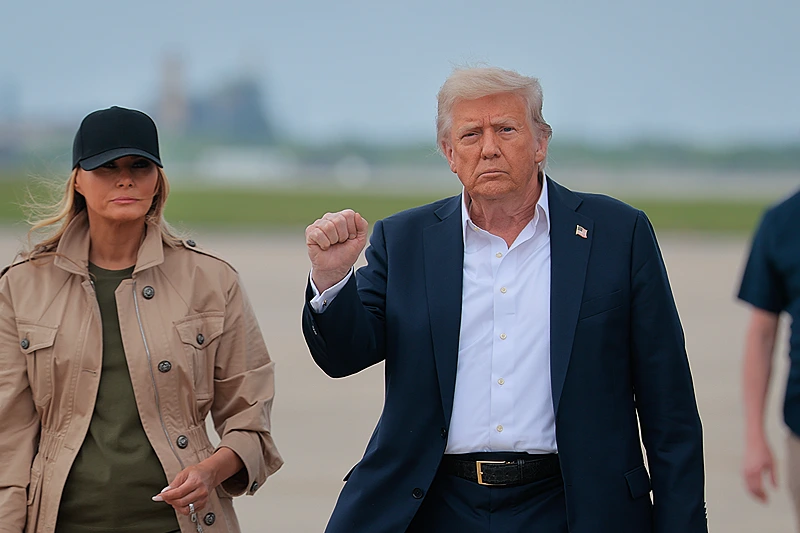
OAN Staff Brooke Mallory
3:44 PM – Friday, July 11, 2025
U.S. customs duty collections surged again back in June as President Donald Trump’s tariffs gained momentum, surpassing $100 billion for the first time in a fiscal year. This helps generate a whopping $27 billion budget surplus for the month, the Treasury Department stated on Friday.
The tariff news was first reported by Reuters.
The budget data revealed that tariffs are becoming a significant source of revenue for the federal government. Customs duties in June reached record highs, nearly quadrupling to $27.2 billion on a gross basis and $26.6 billion net of refunds.
Trump has long promoted tariffs as a lucrative revenue stream, saying on Tuesday that “the big money” would start coming in once he imposes higher “reciprocal” tariffs on U.S. trading partners — starting August 1st.
For the first nine months of fiscal 2025, customs duty collections hit record levels — $113.3 billion on a gross basis and $108 billion net — nearly double the amount collected in the same period last year.
As a result, tariffs have climbed to become the fourth-largest source of federal revenue, trailing only individual withheld receipts at $2.683 trillion for the fiscal year, non-withheld individual receipts at $965 billion, and corporate taxes at $392 billion.
Additionally, in around four months, tariffs’ share of federal revenue has more than doubled, rising from around 2% historically to roughly 5% today. The 2025 fiscal year runs from October 1, 2024, to September 30, 2025.
The June budget surplus marked a sharp turnaround from the $71 billion deficit posted in June 2024. Thanks in large part to tariff-related revenue, total budget receipts for the month climbed 13%, or $60 billion, reaching a record $526 billion, the Treasury announced.
Meanwhile, outlays fell 7%, or $38 billion, to $499 billion.
After adjusting for calendar shifts in certain revenue and benefit payments, the Treasury said there would have been a budget deficit of $70 billion in June, compared to an adjusted deficit of $143 billion a year earlier. However, despite this, the overall year-to-date deficit grew by 5%, or $64 billion, reaching $1.337 trillion.
This increase was driven by higher spending on health care programs, Social Security retirement benefits, defense, and interest on the national debt, the Treasury noted.
Receipts for the first nine months of the fiscal year increased 7%, or $254 billion, reaching a record $4.008 trillion, while outlays rose 6%, or $318 billion, to a record $5.346 trillion.
The Treasury’s interest costs on the growing national debt also climbed, hitting $921 billion during the same period — an increase of 6%, or $53 billion, compared to last year. However, a Treasury official noted that the weighted average interest rate largely stabilized at 3.3% by the end of June, up just two basis points from a year earlier.
Bessent suggested earlier this week that tariff collections could ramp up even more sharply, telling a cabinet meeting that calendar-year 2025 revenues might reach $300 billion by the end of December.
At the current June run rate, gross customs collections would total $276.5 billion over six months, meaning hitting Bessent’s target would require more increases.
Bessent also noted that the CBO has estimated tariff-related income at about $2.8 trillion over the next decade — “which we think is probably low,” he continued.
President Trump has set a new deadline of August 1st for higher “reciprocal” tariff rates to take effect on nearly all U.S. trading partners, while leaving room for negotiations with some countries over the next three weeks to secure deals that could lower those rates.
Since making those remarks on Tuesday, the president has accelerated his tariff campaign, announcing 50% levies on copper imports and goods from Brazil, as well as a 35% tariff on Canadian goods — all set to begin at the start of August.
Meanwhile, the Trump administration is also preparing additional sector-specific tariffs targeting semiconductors and pharmaceuticals.
Stay informed! Receive breaking news alerts directly to your inbox for free. Subscribe here. https://www.oann.com/alerts

















